Abstract
BACKGROUND: This project directly and empirically measured the level of gastrointestinal (GI) illness related to the consumption of tapwater prepared from sewage-contaminated surface waters and meeting current water quality criteria. METHODS: A randomized intervention trial was carried out; 299 eligible households were supplied with domestic water filters (reverse-osmosis) that eliminate microbial and chemical contaminants from their water, and 307 households were left with their usual tapwater without a filter. The GI symptomatology was evaluated by means of a family health diary maintained prospectively by all study families over a 15-month period. RESULTS: The estimated annual incidence of GI illness was 0.76 among tapwater drinkers compared with 0.50 among filtered water drinkers (p less than 0.01). These findings were consistently observed in all population subgroups. CONCLUSION: It is estimated that 35% of the reported GI illnesses among the tapwater drinkers were water-related and preventable. Our results raise questions about the adequacy of current standards of drinking water quality to prevent water-borne endemic gastrointestinal illness.
Full text
PDF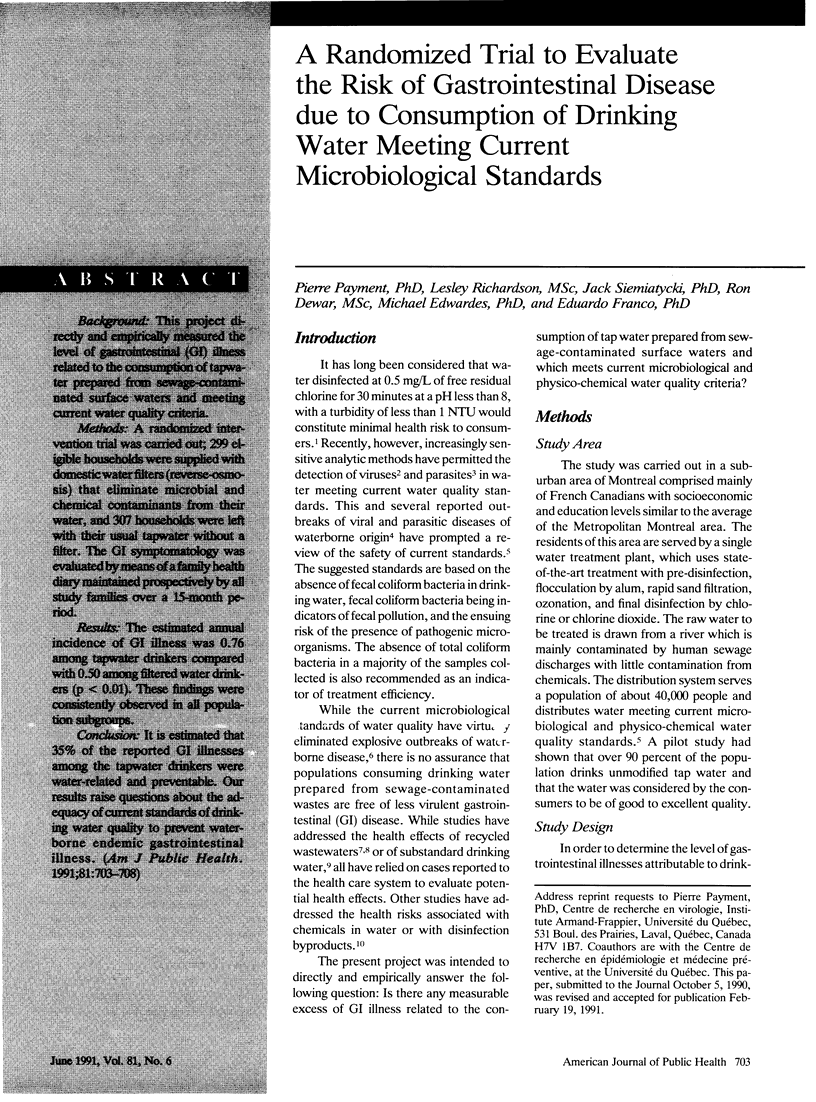
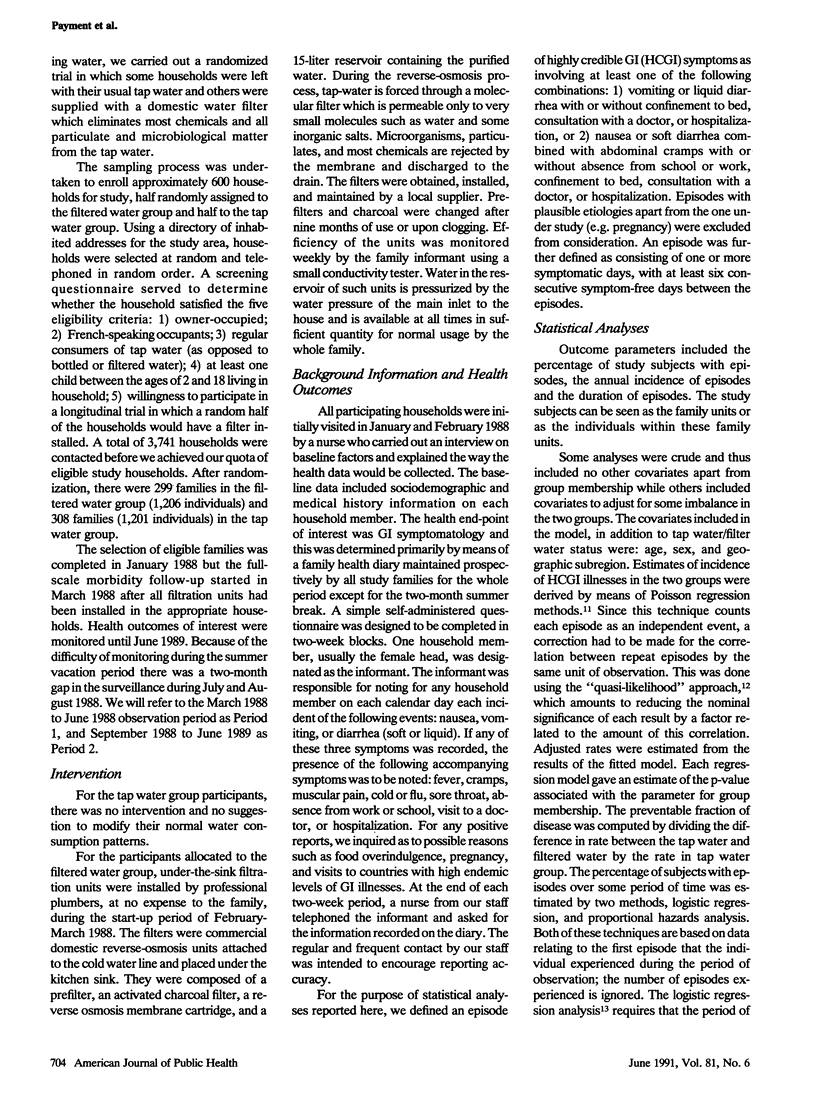
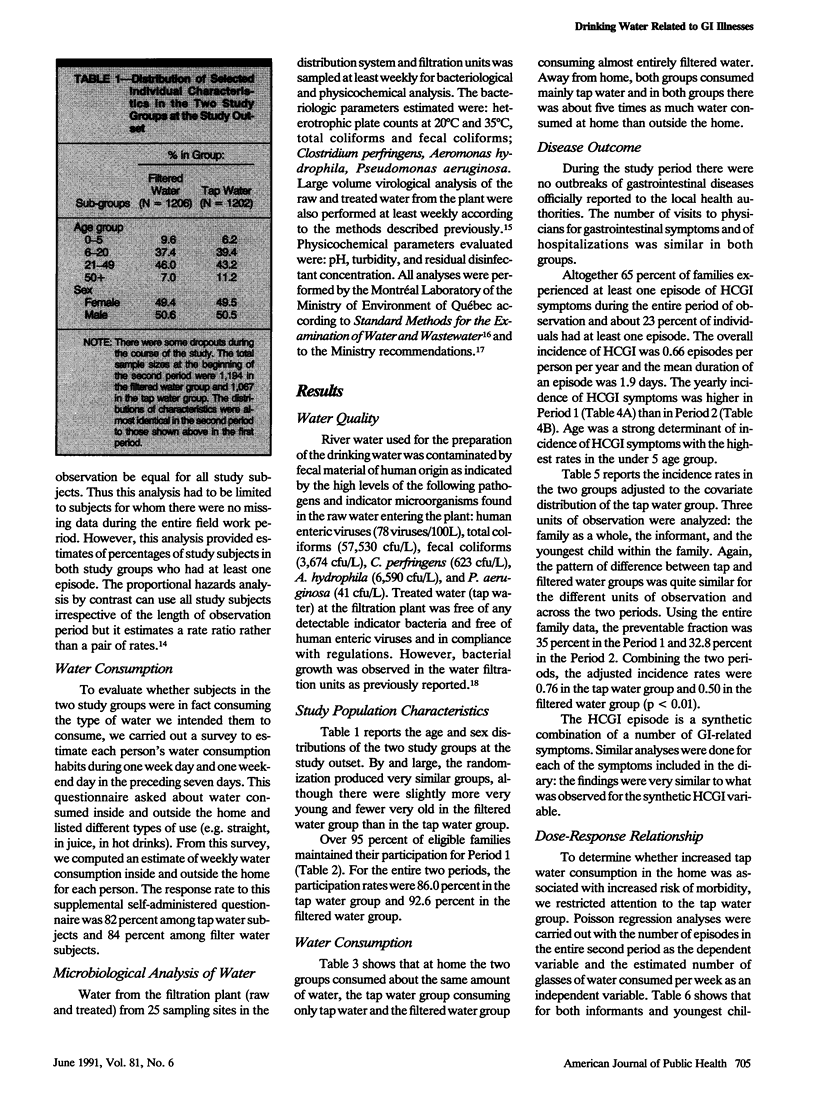
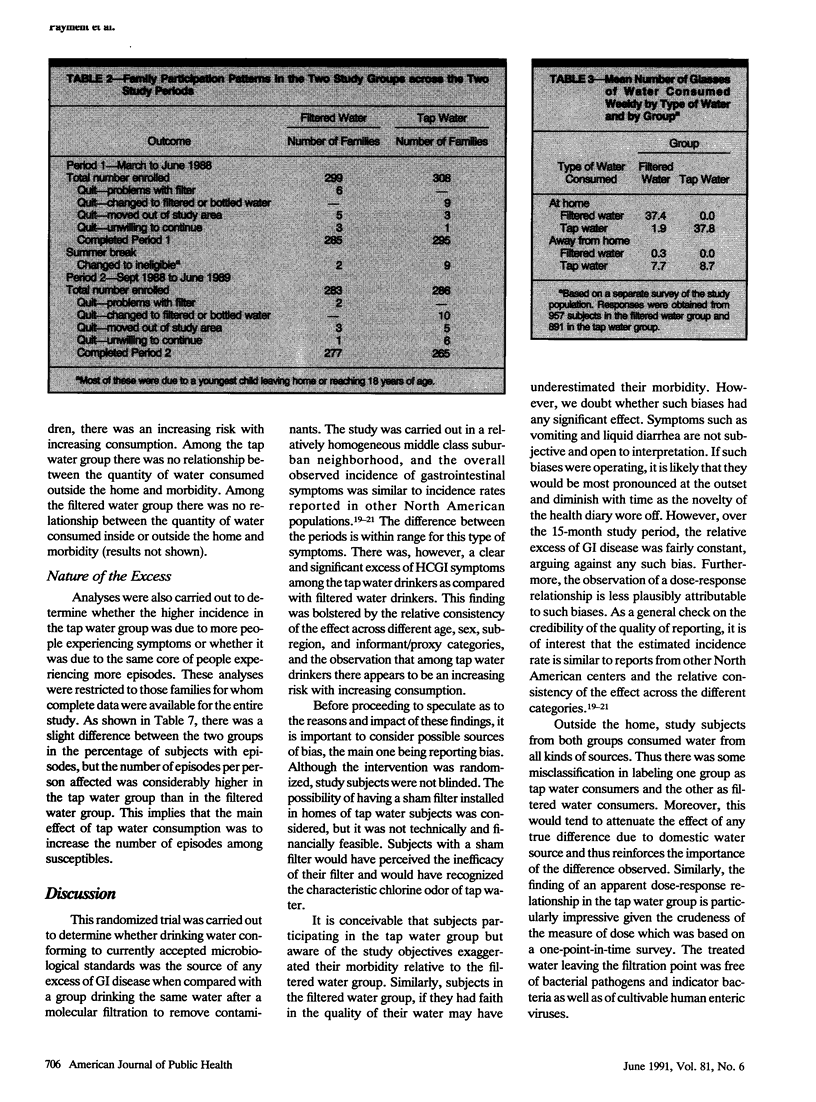
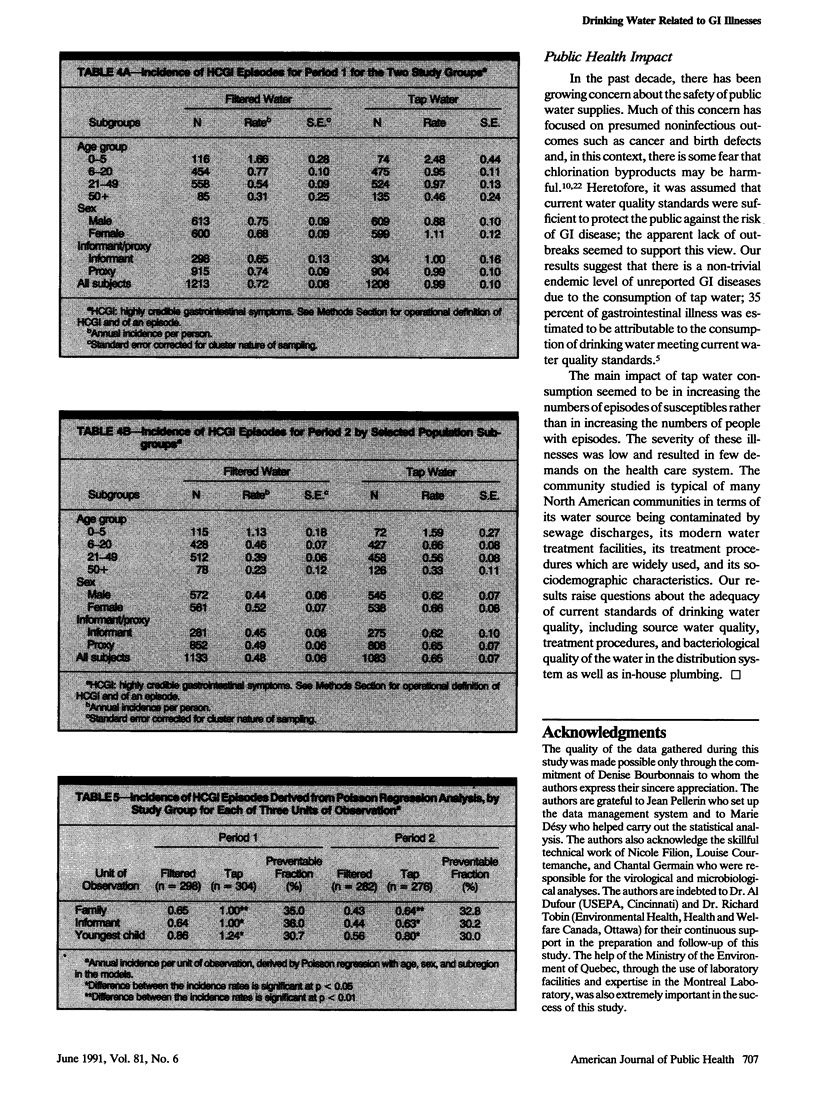
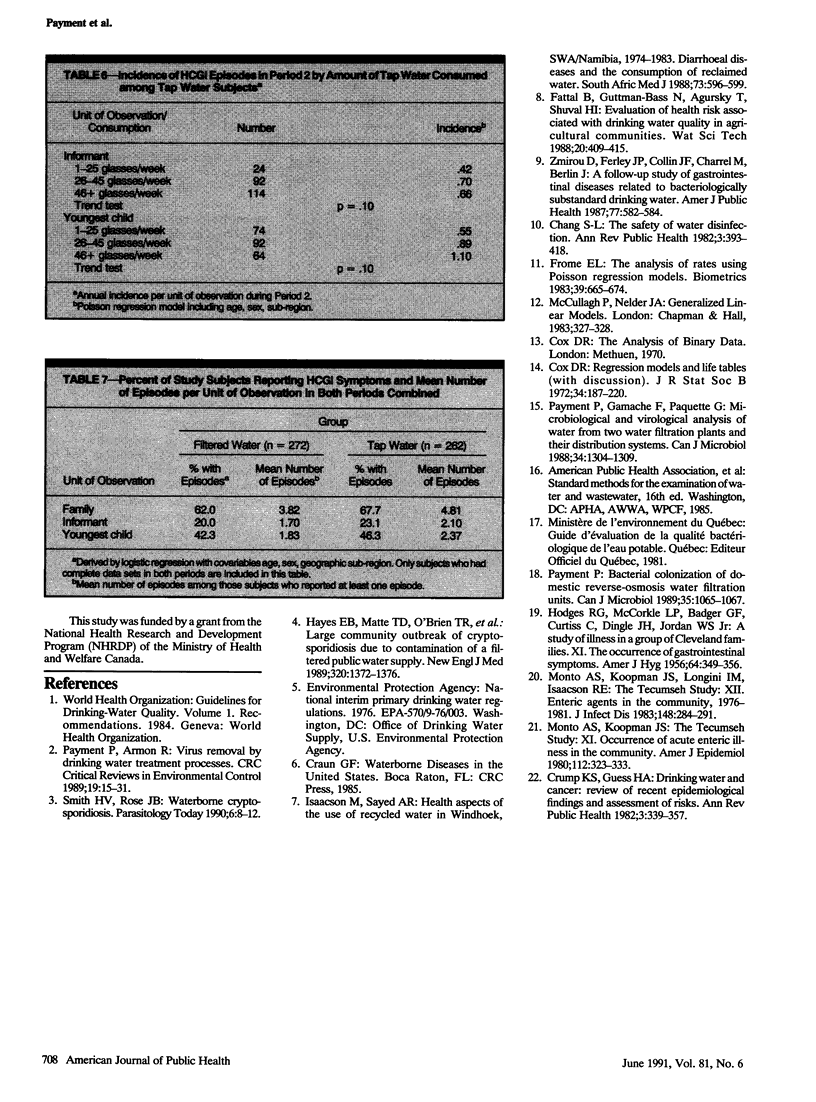
Selected References
These references are in PubMed. This may not be the complete list of references from this article.
- BADGER G. F., CURTISS C., DINGLE J. H., HODGES R. G., JORDAN W. S., Jr, MCCORKLE L. P. A study of illness in a group of Cleveland families. XI. The occurrence of gastrointestinal symptoms. Am J Hyg. 1956 Nov;64(3):349–356. doi: 10.1093/oxfordjournals.aje.a119847. [DOI] [PubMed] [Google Scholar]
- Chang S. L. The safety of water disinfection. Annu Rev Public Health. 1982;3:393–418. doi: 10.1146/annurev.pu.03.050182.002141. [DOI] [PubMed] [Google Scholar]
- Crump K. S., Guess H. A. Drinking water and cancer: review of recent epidemiological findings and assessment of risks. Annu Rev Public Health. 1982;3:339–357. doi: 10.1146/annurev.pu.03.050182.002011. [DOI] [PubMed] [Google Scholar]
- Frome E. L. The analysis of rates using Poisson regression models. Biometrics. 1983 Sep;39(3):665–674. [PubMed] [Google Scholar]
- Hayes E. B., Matte T. D., O'Brien T. R., McKinley T. W., Logsdon G. S., Rose J. B., Ungar B. L., Word D. M., Pinsky P. F., Cummings M. L. Large community outbreak of cryptosporidiosis due to contamination of a filtered public water supply. N Engl J Med. 1989 May 25;320(21):1372–1376. doi: 10.1056/NEJM198905253202103. [DOI] [PubMed] [Google Scholar]
- Isaäcson M., Sayed A. R. Health aspects of the use of recycled water in Windhoek, SWA/Namibia, 1974-1983. Diarrhoeal diseases and the consumption of reclaimed water. S Afr Med J. 1988 May 21;73(10):596–599. [PubMed] [Google Scholar]
- Monto A. S., Koopman J. S., Longini I. M., Isaacson R. E. The Tecumseh study. XII. Enteric agents in the community, 1976-1981. J Infect Dis. 1983 Aug;148(2):284–291. doi: 10.1093/infdis/148.2.284. [DOI] [PubMed] [Google Scholar]
- Monto A. S., Koopman J. S. The Tecumseh Study. XI. Occurrence of acute enteric illness in the community. Am J Epidemiol. 1980 Sep;112(3):323–333. doi: 10.1093/oxfordjournals.aje.a112998. [DOI] [PubMed] [Google Scholar]
- Payment P. Bacterial colonization of domestic reverse-osmosis water filtration units. Can J Microbiol. 1989 Nov;35(11):1065–1067. doi: 10.1139/m89-178. [DOI] [PubMed] [Google Scholar]
- Payment P., Gamache F., Paquette G. Microbiological and virological analysis of water from two water filtration plants and their distribution systems. Can J Microbiol. 1988 Dec;34(12):1304–1309. doi: 10.1139/m88-228. [DOI] [PubMed] [Google Scholar]
- Smith H. V., Rose J. B. Waterborne cryptosporidiosis. Parasitol Today. 1990 Jan;6(1):8–12. doi: 10.1016/0169-4758(90)90378-h. [DOI] [PubMed] [Google Scholar]
- Zmirou D., Ferley J. P., Collin J. F., Charrel M., Berlin J. A follow-up study of gastro-intestinal diseases related to bacteriologically substandard drinking water. Am J Public Health. 1987 May;77(5):582–584. doi: 10.2105/ajph.77.5.582. [DOI] [PMC free article] [PubMed] [Google Scholar]


